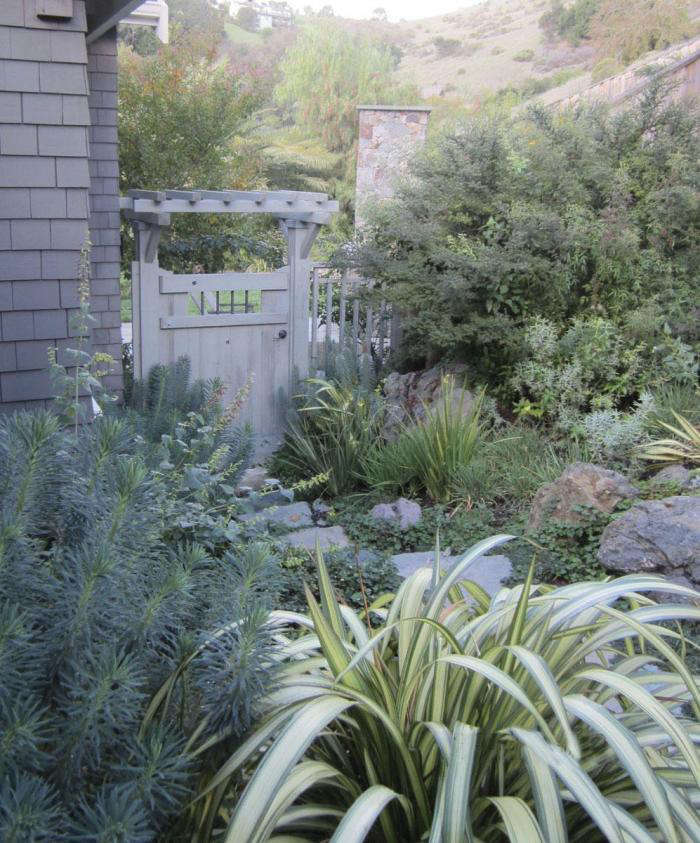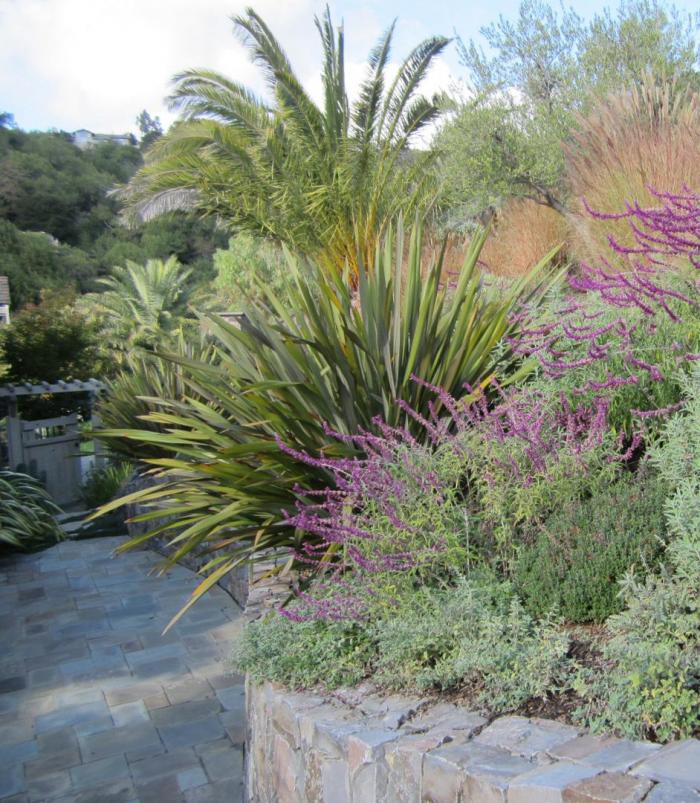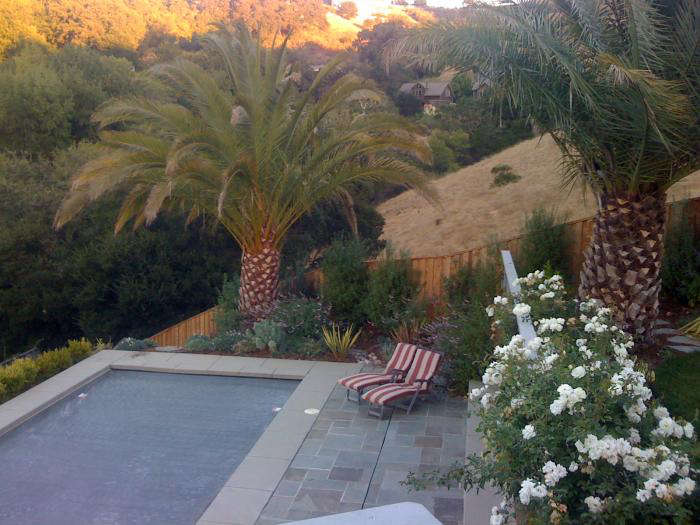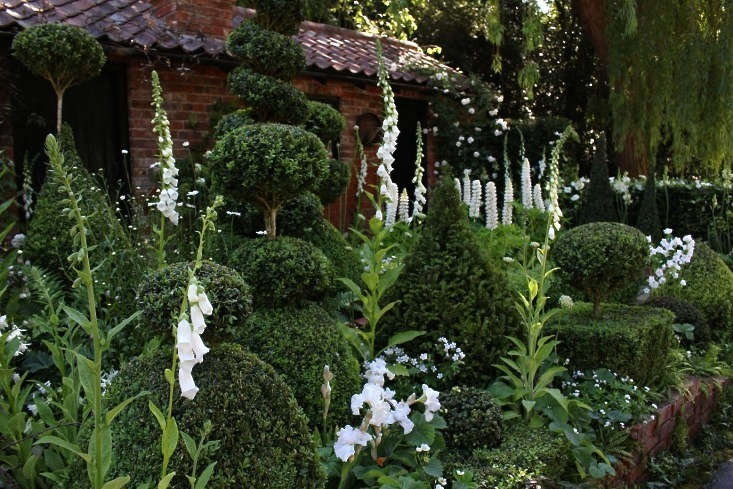Whenever we feature a lavish, big-budget garden project, we can’t help wondering: What does a landscape architect’s own backyard look like?
Here’s one answer to that question. Northern California landscape architect Pede Pedersen–who designs grand seaside overlooks, formal garden schemes, and terraces that spill down slopes to infinity-edged pools–invited us to visit his home in San Anselmo, a half hour’s drive north of San Francisco. He designed his one-acre garden and built much of it himself (“I’m handy with tools,” he says) over the course of seven years. Here’s his story:
Photographs courtesy of Pedersen Associates.

After selling off some of the empty land to a builder, Pedersen ended up with a one-acre parcel on a steep slope. The challenge: “We wanted the house to empty out onto flat terraces instead of decks. I have to be connected to the ground, to walk out the door and be able to walk onto dirt,” he says.

A couple of years later, Pedersen designed and built the gate himself, using western red cedar wrapped around pressure-treated posts. On either side of the path is euphorbia; in the foreground is a Phormium ‘Yellow Wave,’ native to New Zealand. It will reach a height of 4 feet and prefers full sun or light shade.

All the stone walls have blind joints. “You don’t see any mortar, which shows of the stone very nicely,” he says.

The ground cover that grows between the stones is rubus, a trailing raspberry that roots itself as it grows, allowing it to creep and seek out water. “It looks best in dappled light,” says Pedersen. “In full sun, the leaf edges can get cooked.”

The purple Mexican bush sage is irresistible to hummingbirds. “We’ve got tons of them,” says Pedersen. “The birds are thick up there.”

The lawn is on completely flat areas, and the “garden” is on all the slopes. “It’s a billy goat garden,” says Pedersen. “You need ways to get in and around on the terraced slopes. There are little paths and things eked into the side of the slopes to get you up there.”

For more inspiring gardens in Northern California, see:
- Herbal Garden Visit: At Home with Slow Beauty Expert Justine Kahn, in Sausalito
- Landscape Designer Visit: At Home with Flora Grubb in Berkeley, CA
- Designer Visit: ‘Magical Green Pocket Garden’ in San Francisco








Have a Question or Comment About This Post?
Join the conversation